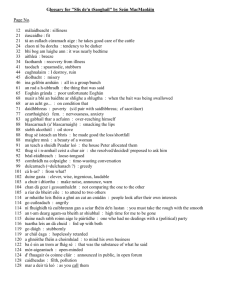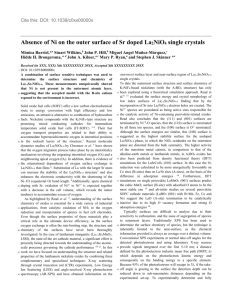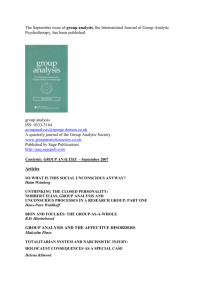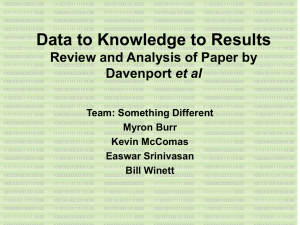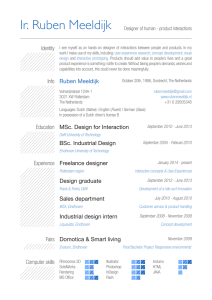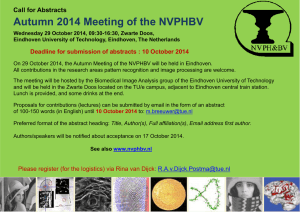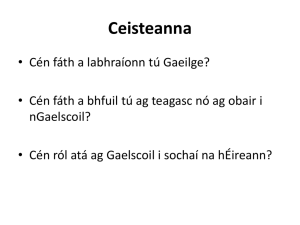LEIS: A new tool in the understanding of catalysts
advertisement
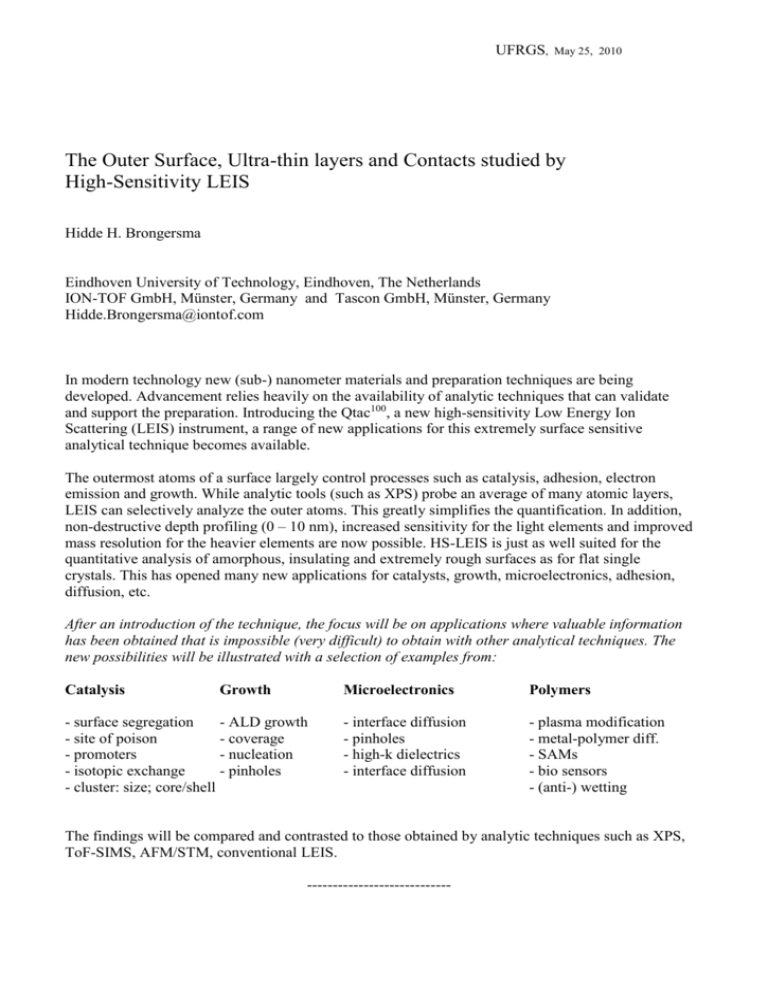
UFRGS, May 25, 2010 The Outer Surface, Ultra-thin layers and Contacts studied by High-Sensitivity LEIS Hidde H. Brongersma Eindhoven University of Technology, Eindhoven, The Netherlands ION-TOF GmbH, Münster, Germany and Tascon GmbH, Münster, Germany Hidde.Brongersma@iontof.com In modern technology new (sub-) nanometer materials and preparation techniques are being developed. Advancement relies heavily on the availability of analytic techniques that can validate and support the preparation. Introducing the Qtac100, a new high-sensitivity Low Energy Ion Scattering (LEIS) instrument, a range of new applications for this extremely surface sensitive analytical technique becomes available. The outermost atoms of a surface largely control processes such as catalysis, adhesion, electron emission and growth. While analytic tools (such as XPS) probe an average of many atomic layers, LEIS can selectively analyze the outer atoms. This greatly simplifies the quantification. In addition, non-destructive depth profiling (0 – 10 nm), increased sensitivity for the light elements and improved mass resolution for the heavier elements are now possible. HS-LEIS is just as well suited for the quantitative analysis of amorphous, insulating and extremely rough surfaces as for flat single crystals. This has opened many new applications for catalysts, growth, microelectronics, adhesion, diffusion, etc. After an introduction of the technique, the focus will be on applications where valuable information has been obtained that is impossible (very difficult) to obtain with other analytical techniques. The new possibilities will be illustrated with a selection of examples from: Catalysis Growth - surface segregation - ALD growth - site of poison - coverage - promoters - nucleation - isotopic exchange - pinholes - cluster: size; core/shell Microelectronics Polymers - interface diffusion - pinholes - high-k dielectrics - interface diffusion - plasma modification - metal-polymer diff. - SAMs - bio sensors - (anti-) wetting The findings will be compared and contrasted to those obtained by analytic techniques such as XPS, ToF-SIMS, AFM/STM, conventional LEIS. ----------------------------
